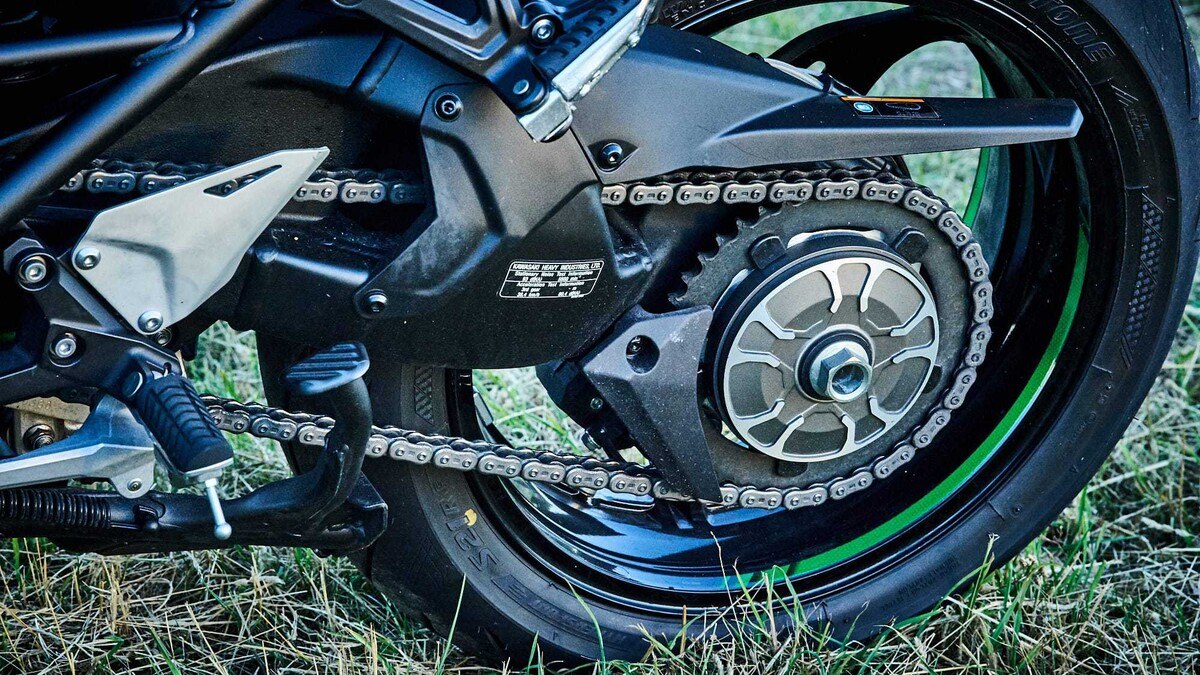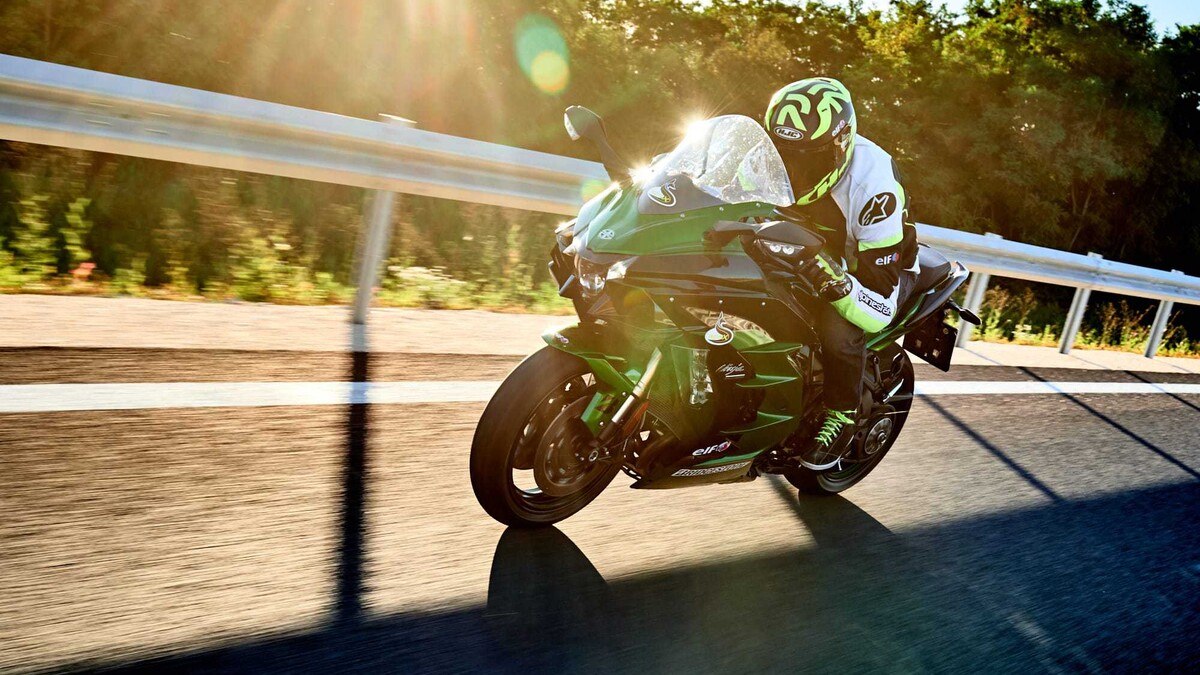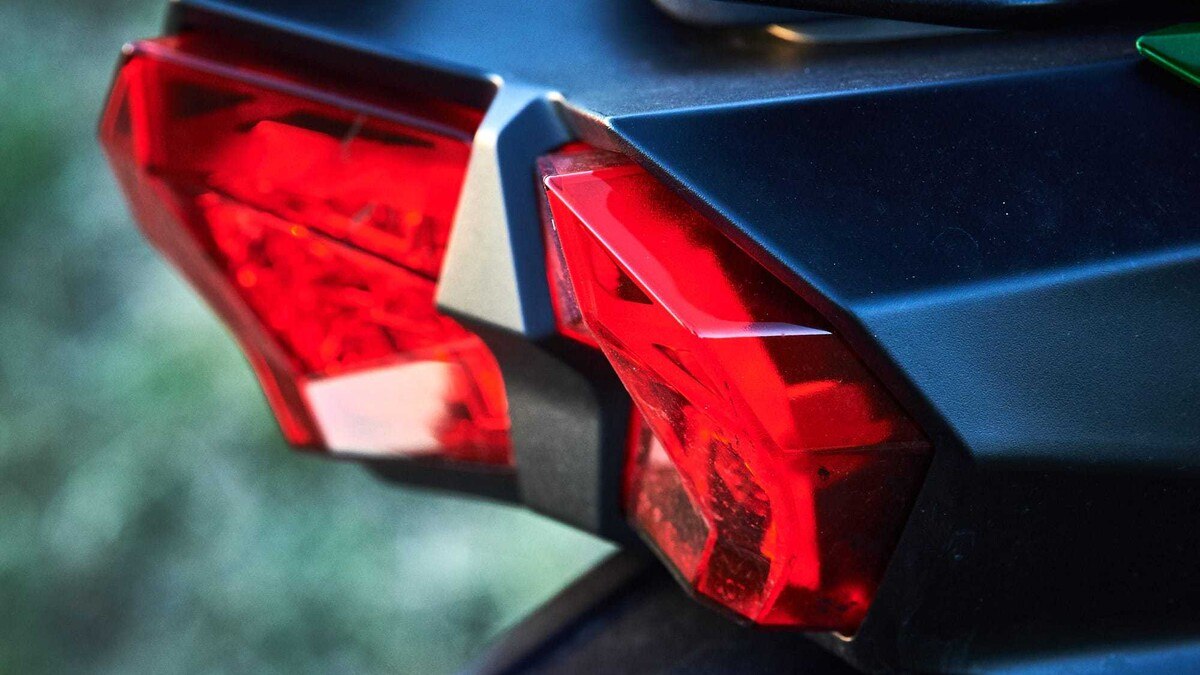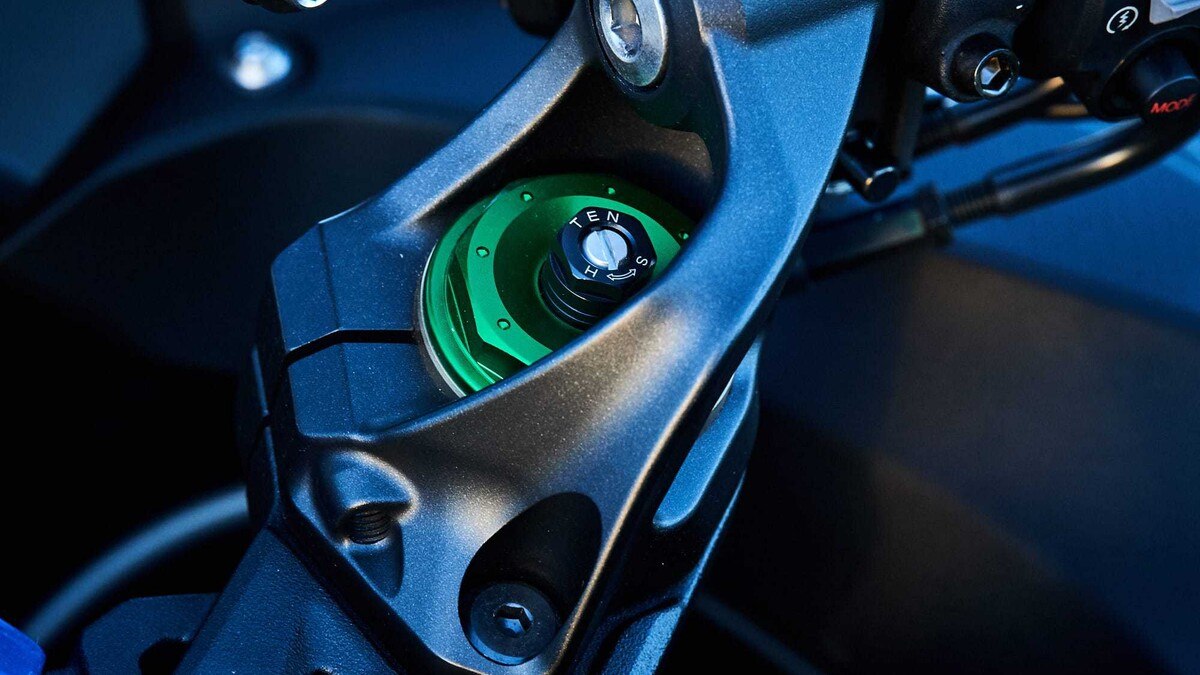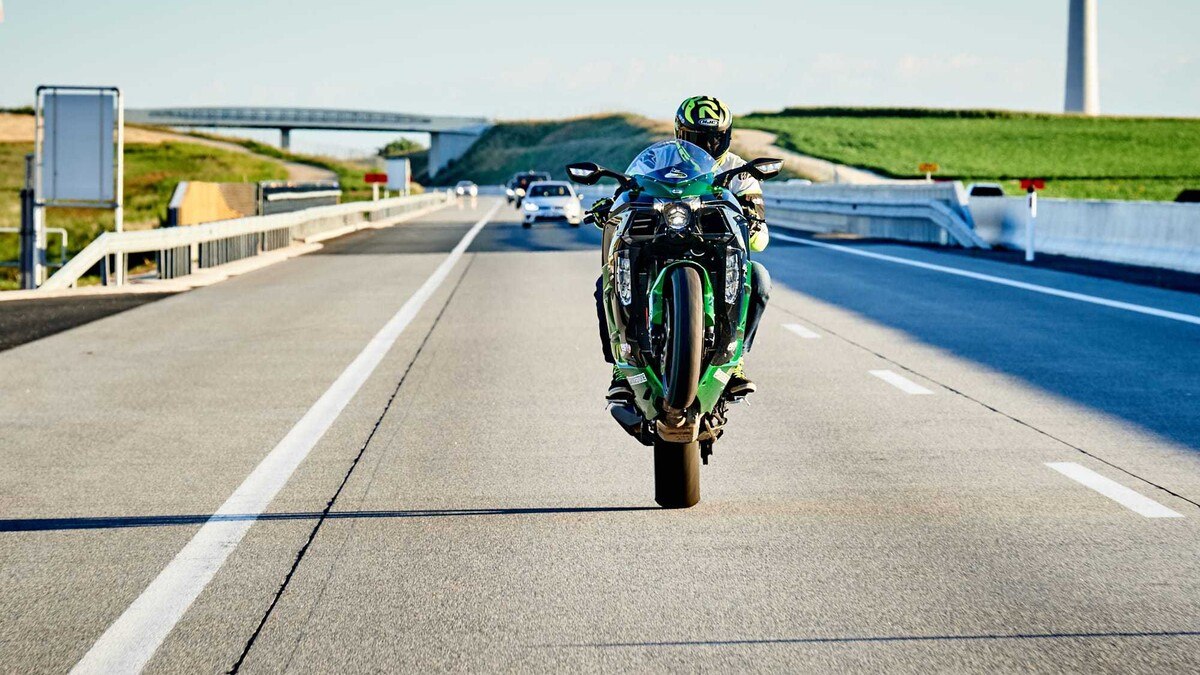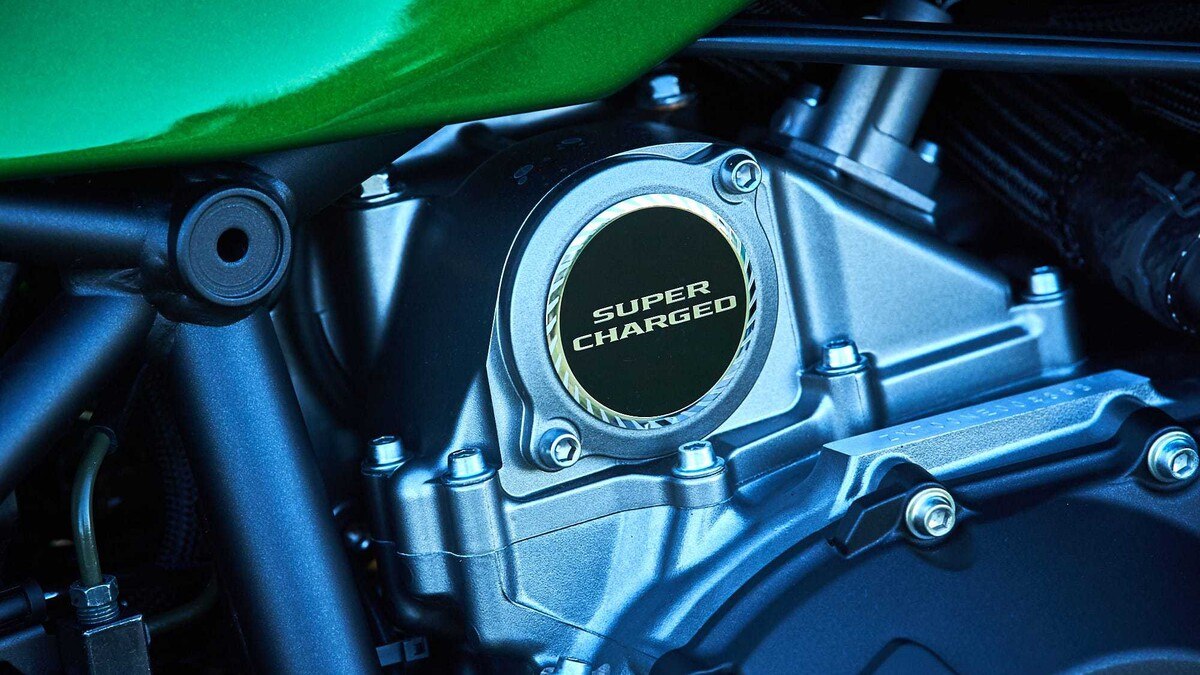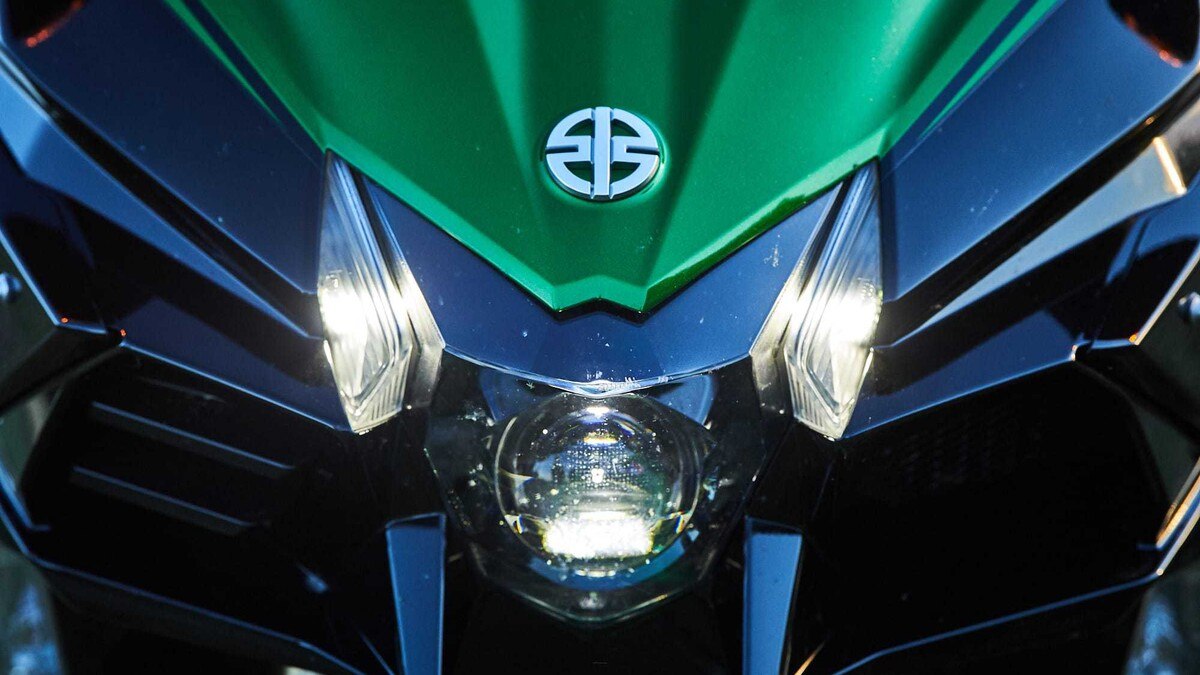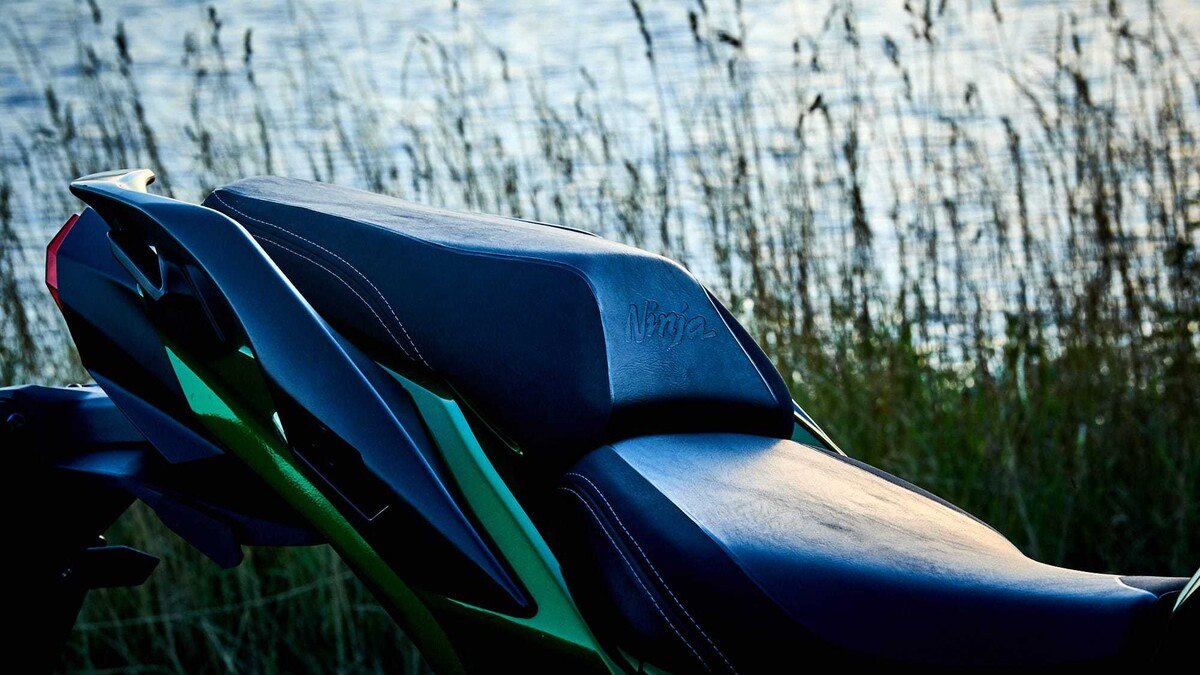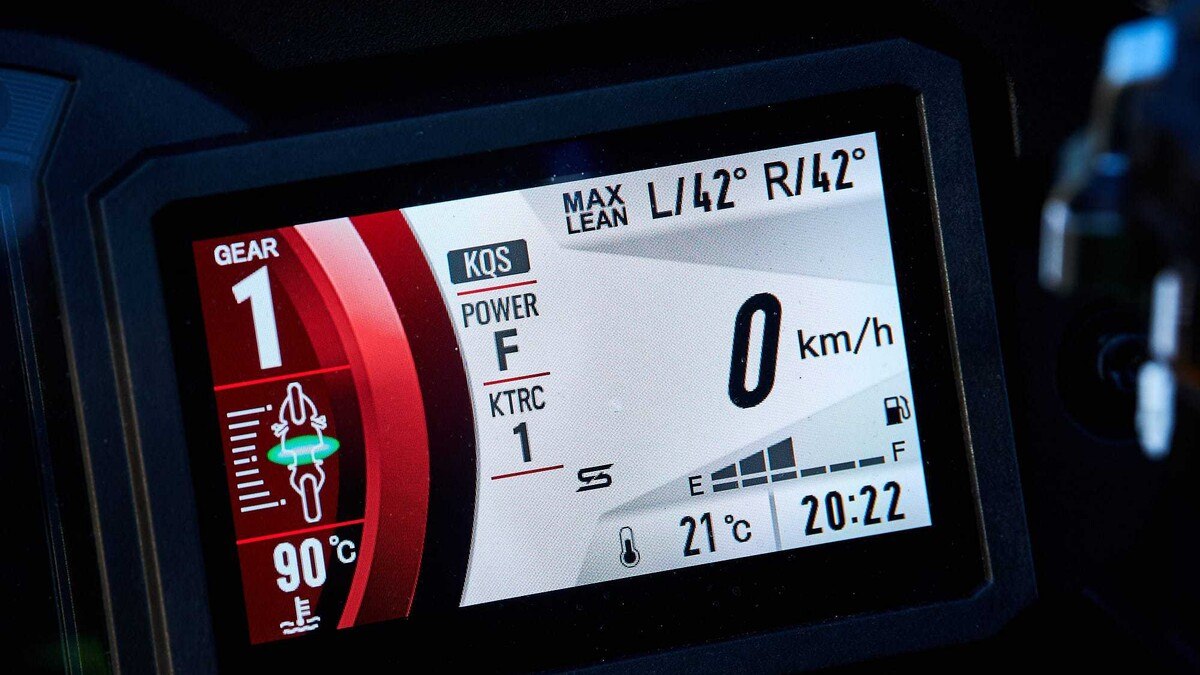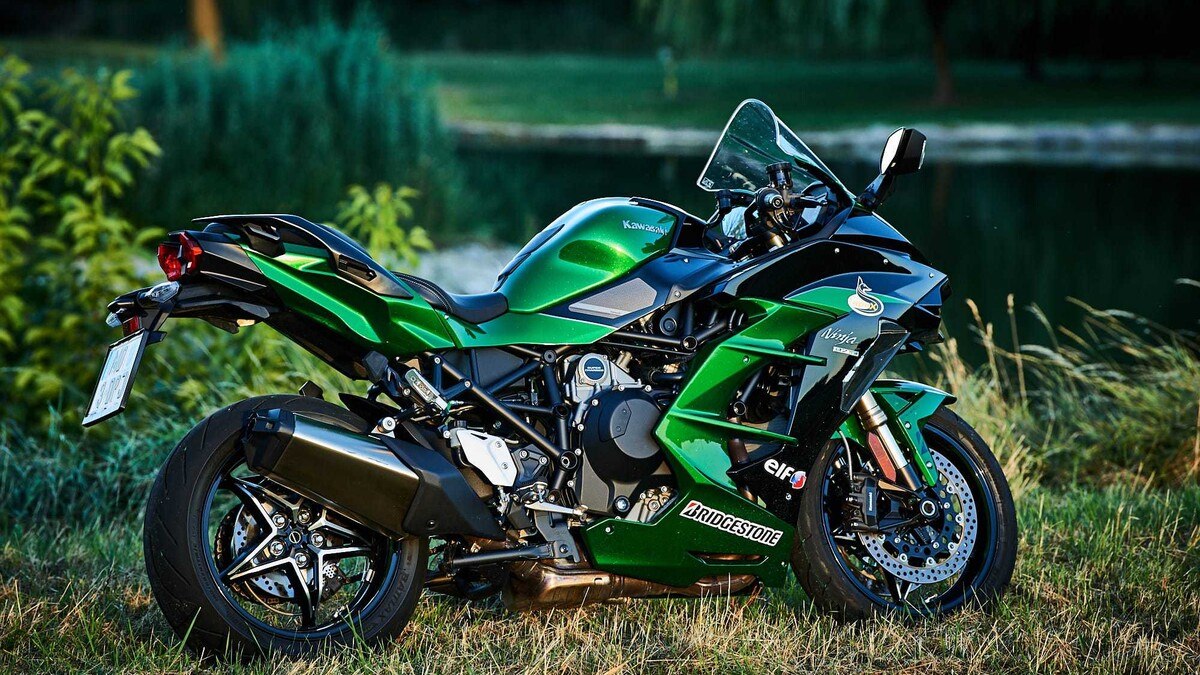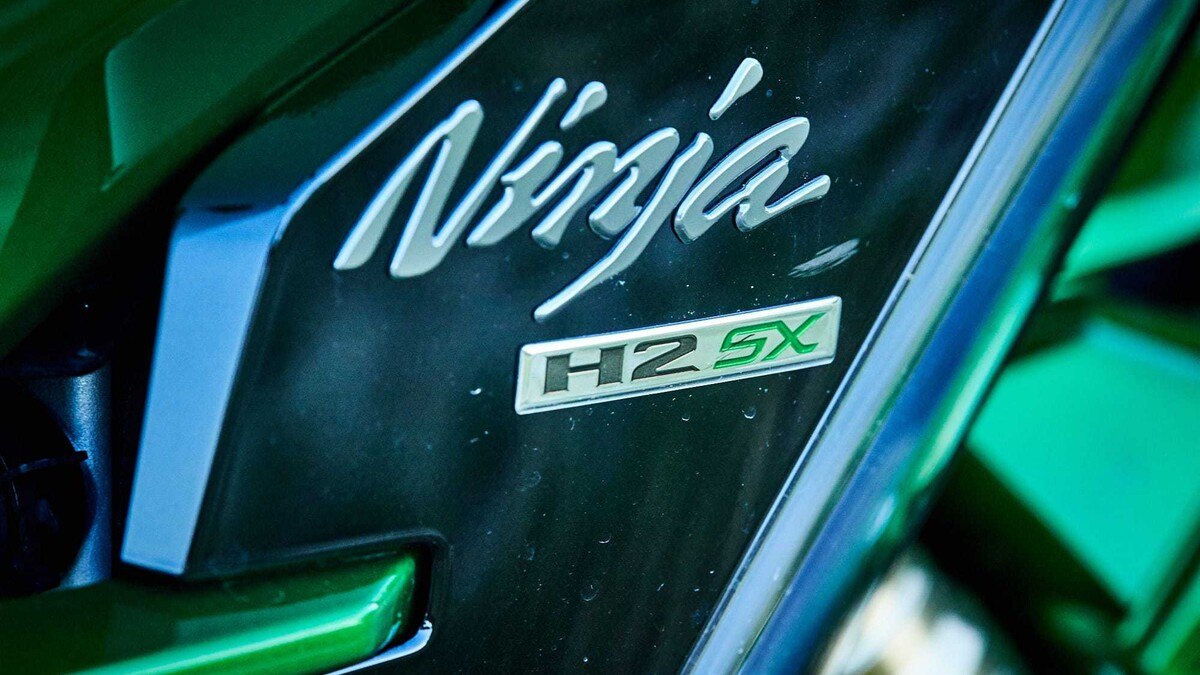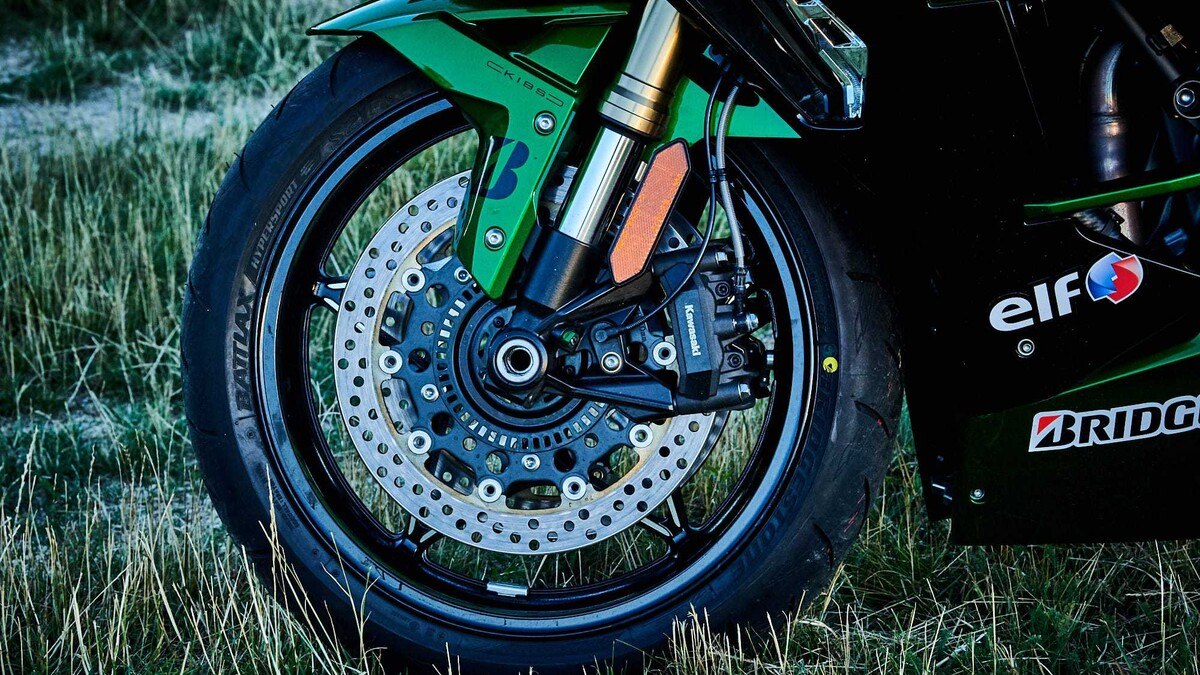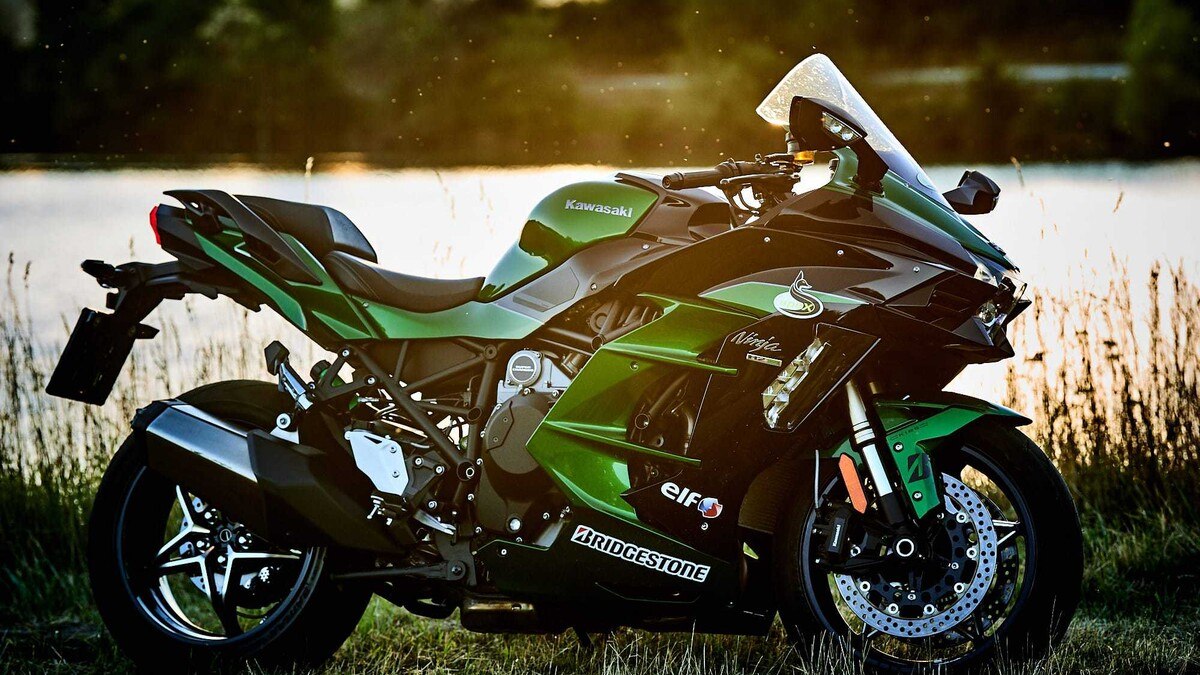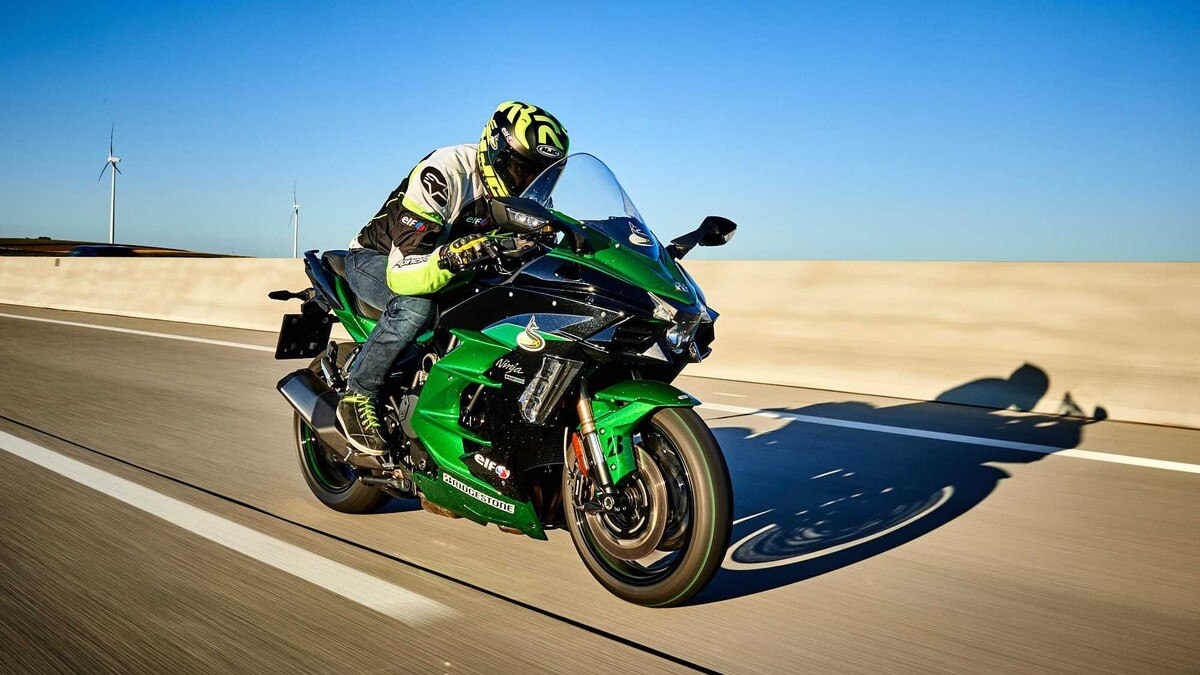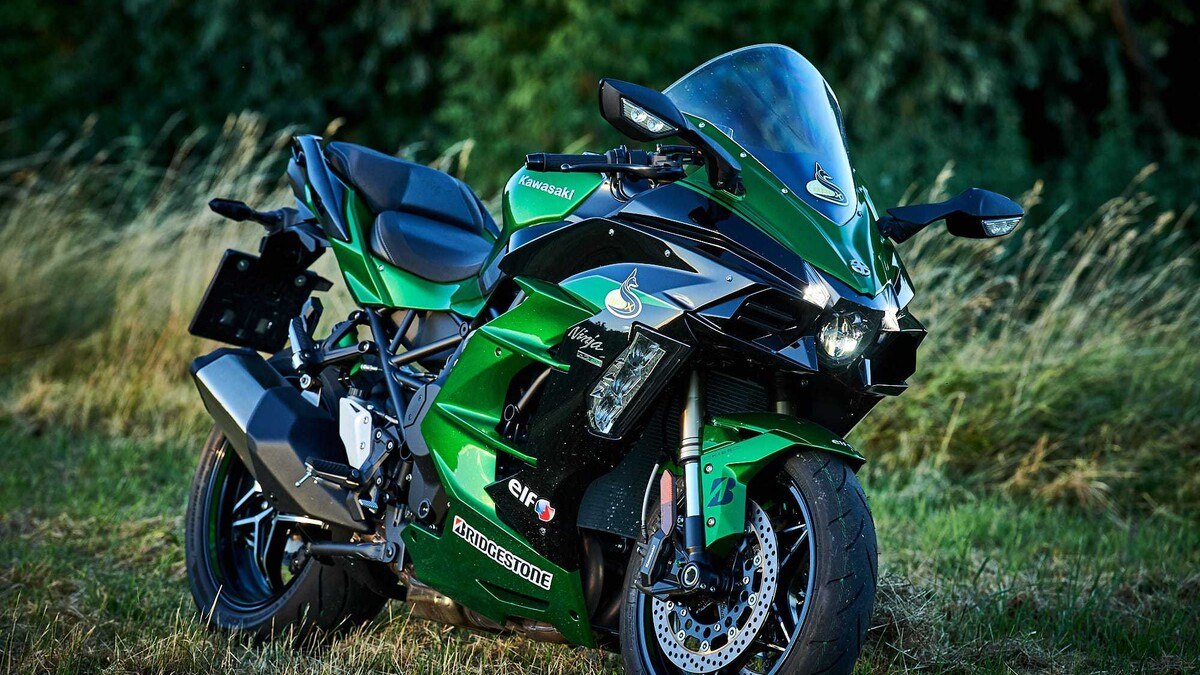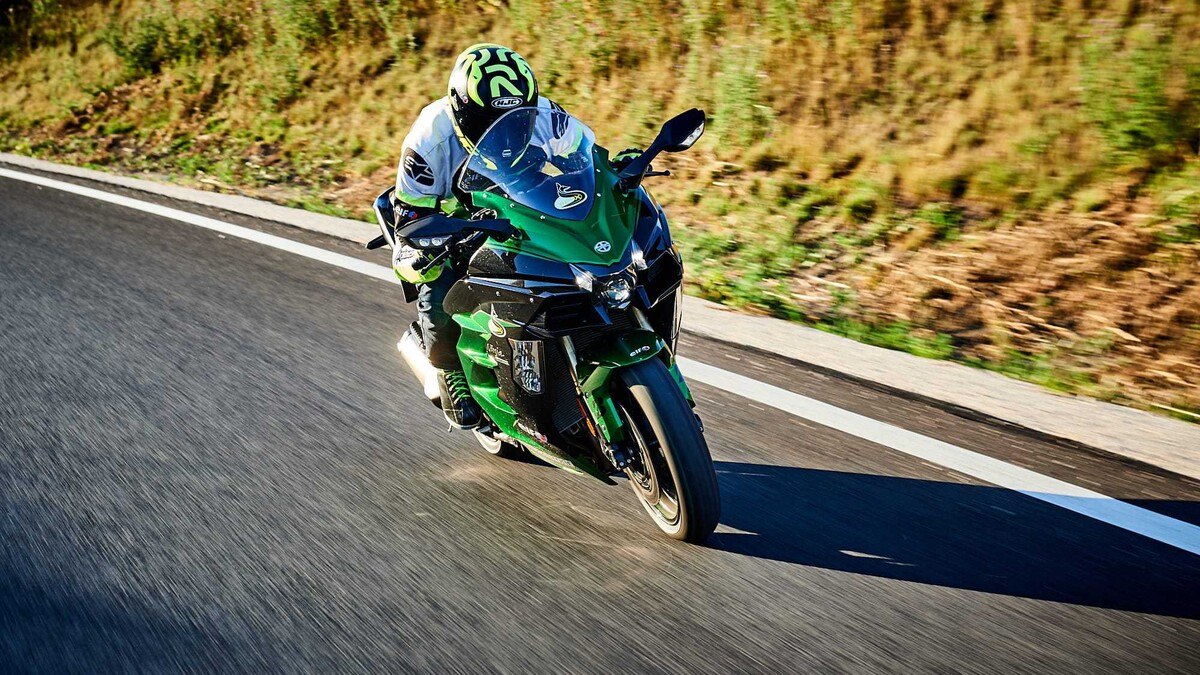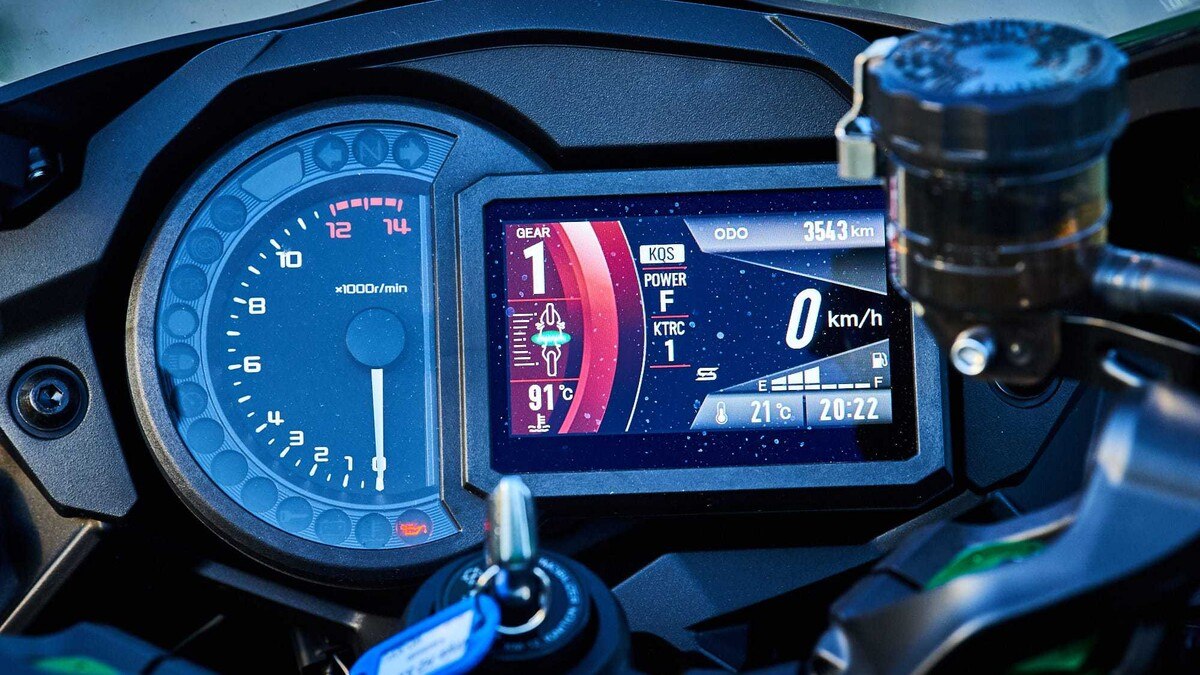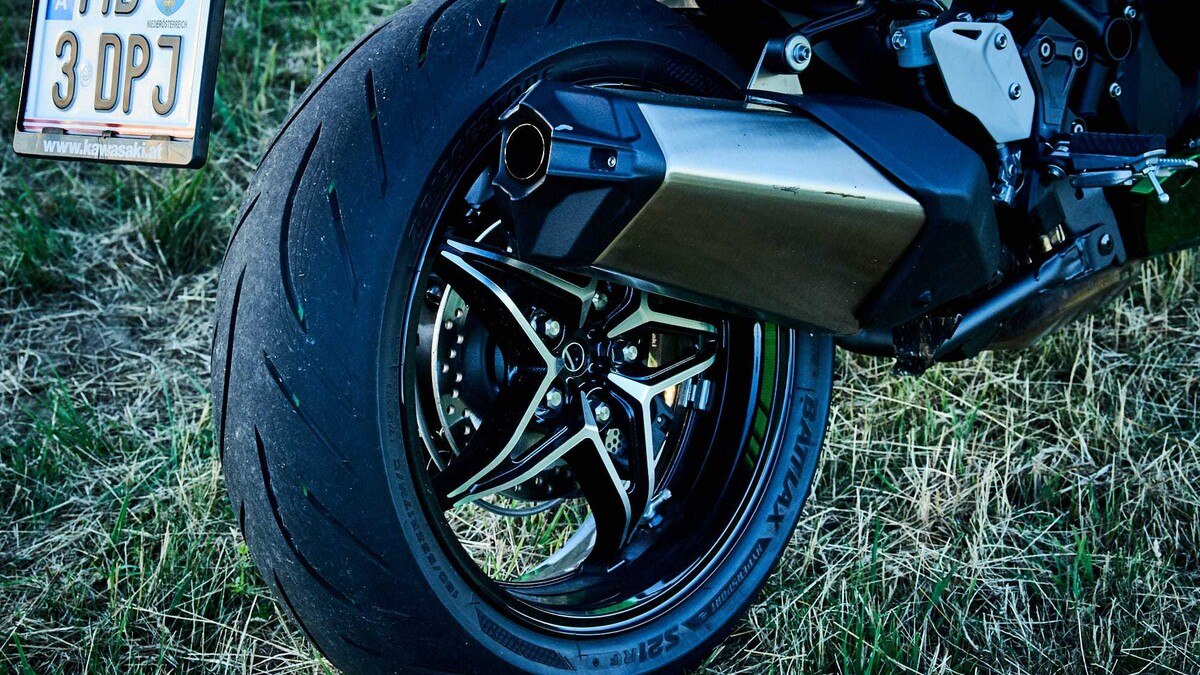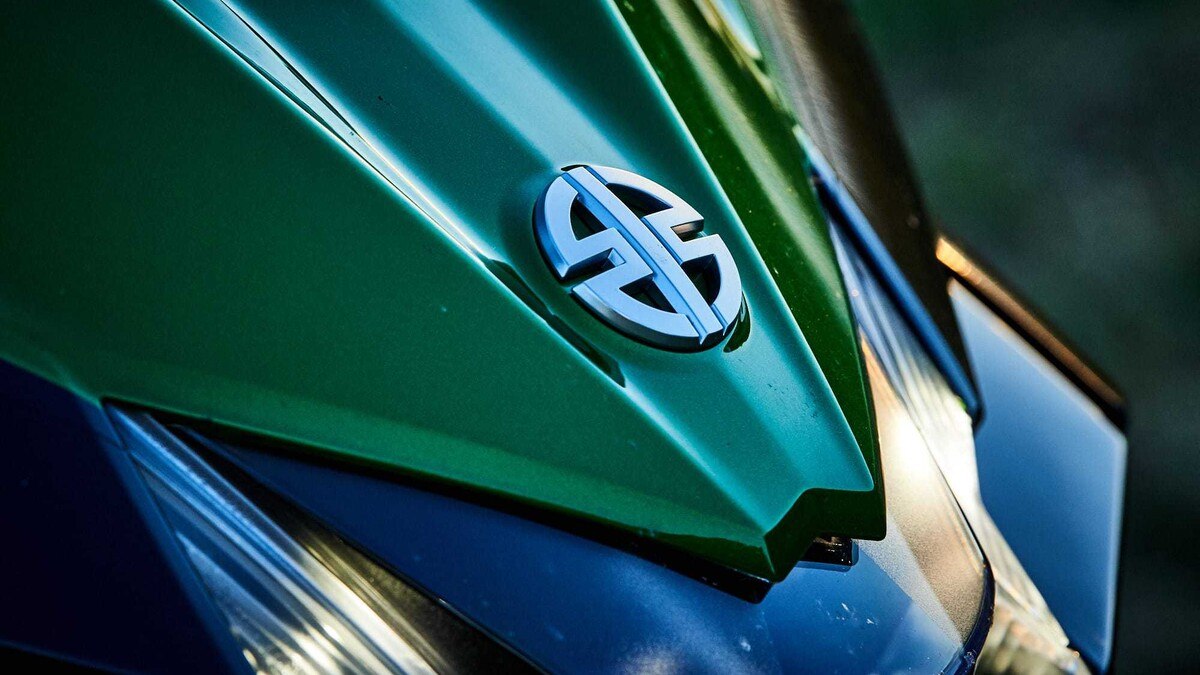Test Kawasaki H2 SX SE - Optimus Speed
998 cubic meters, compressor, 200 hp - everything you need for a decent tour on two wheels. Or: How Kawasaki is redefining touring sports motorcycles with the H2 SX SE.
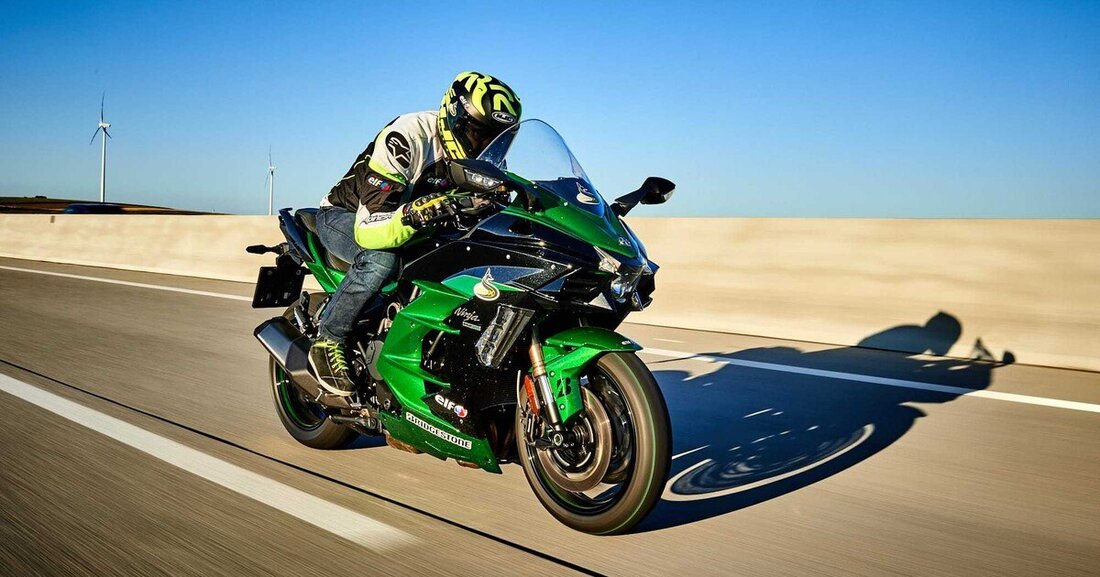
Test Kawasaki H2 SX SE - Optimus Speed
ergonomics
The green and black Transformer, I like to call the Kawasaki H2 SX SE Optimus Speed, is a very, very powerful appearance. With 256 kilograms ready to ride, you're looking at a lot of motorcycle. Sitting up... look, despite the 835 mm seat height, I can easily reach the ground with my stork legs. The bench is wide, comfortable and absolutely suitable for touring. The tank is wider, but doesn't bother you. The knee fit is typical of in-line four-cylinder engines: it fits, but is not as tight as with V2 engines. Reach for the stubs, which are not mounted as low as they appear in the pictures. And they are also pleasantly wide and cranked. Yep, with the sitting position you can easily cover a few hundred kilometers a day. The windshield offers plenty of wind protection and the wide side fairing also directs the wind smoothly around the pilot. The tank holds 19 liters. Enough so that you don't have to constantly plan a refueling stop, as you can drive quite economically with the H2 SX.
Handling
Optimus Speed looks thick, has a bit of fighting weight, but drives surprisingly light-footed - for this class. You only feel its weight when you push it. When the engine is running and it starts rolling, it feels much lighter. The wide touring stubs help. And the Bridgestone S21 sports tire. But the H2 SX has a certain size. You can feel this especially in the city when you wind your way through the traffic jams. On the country road it's a completely different picture: Well, when braking from high speeds you can feel the almost 260 kilograms again. But on winding terrain the Optimus Speed surprises with very neutral, logical handling. Once the line has been set, the H2 SX follows through precisely, but allows corrections with a little pressure on the stub. The faster you get, the more stable the handling becomes. In other words: you need more strength to make line corrections. But that doesn't bother you, as the high stability creates a very safe cornering feeling. You don't need to try to chase supermotos on the mountain, they're not designed for that. Your territory is the highway. And she cleans pretty much everything else there. Although superbikes have similar power (or even a bit more) and weigh less, the Kawasaki scores with its high level of comfort despite the strong wind. On superbikes you have to fold up and duck your head when traveling at speeds above 200 km/h. In the Optimus Speed saddle you sit just as comfortably as you would in the city. Except that there are almost two kilos on the speedometer. On straights and long curves you surf past the competition on the outside and have no idea why the people next to you are struggling with the wind. A sublime feeling.
Engine/transmission
Of course, with the Kawasaki H2 SX it's all about the engine: in-line four-cylinder engine, 998 cubic meters, supercharger, 200 hp, 137.5 Newton meters (at 9500 rpm). That sounds much scarier to read than it actually is. Because the Kawasaki engineers have turned the brutal animal on paper into an easy-to-ride bike with unpackable performance. The whistling/whirring sound of the compressor is great. A display in the cockpit shows when and how much the compressor is working. You have to turn the throttle grip to the full stop in order to be able to fully enjoy the compressor. And then Optimus speeds perversely, brutally forward. The straights should be long and the route should be familiar. Because if fire is released, the view becomes a tunnel and the Kawa pushes forward in a nice linear manner without a performance gap. Brutal compressor whammy? None. That wouldn't fit the motorcycle either. The engine is incredibly smooth and load changes are only minimally noticeable. The response is precise. Optimus Speed gets high praise for the gearbox. Not only do gear changes happen easily, precisely and over short distances, but the Kawasaki Quickshifter (KQS) with blipper function (up and down shifting without clutch) works excellently.
Undercarriage
Here comes the only real point of criticism: The H2 SX in the tested SE version does not offer an electronic chassis. Not that you would really miss it, but in this price range the electric chassis is simply missing. And the argument of possible extra weight cannot be accepted at just under 260 kilograms. So Optimus Speed surfs around corners on conventional chassis technology and does it very well. If you look at it soberly, there's nothing to complain about, but if you have the comparison and know how comfortable electric chassis can be without missing out on sportiness, then it's a shame that the Kawa isn't on the road with it. Great effort has been made to find a good compromise with the hydraulic components. That also succeeded. The fork responds well and offers enough feedback to allow you to bend with confidence even late on the brakes. Feeling a bit rear-heavy, the shock absorber also cuts a good figure and is more on the comfortable side. Very nicely done: the green anodized fork caps and the hydraulic spring preload device on the right passenger footrest. These details show how valuable the H2 is. Electric chassis or not.
Brakes
Here Kawasaki has relied on a Bosch cornering ABS and a finely dosed, not too radical front wheel brake that always brings the touring athlete to a stop easily. I would even think that the brakes are of super sports level. Because of the weight, you can't fully exploit it, but the feedback on the brake lever and the controllability are great. The rear wheel brake works surprisingly powerfully. In the city, the rear stopper is sufficient for every situation.
Noticed
The great paint, the loving, high-quality workmanship and the great whirring of the compressor. The LED cornering lights are a nice gimmick, the very comfortable seat is great for the rear. Very clever: the lean angle display in degrees in the cockpit. And of course the buttery but still powerful thrust. You should have experienced it once at full throttle on the iron. Pretty: the single-sided swingarm.
Failed
It's not entirely clear to me that doing without an electronic chassis would have to be feasible given the price.
Test result Kawasaki H2 SX SE, by p.bednar
More information about Kawasaki H2 SX Special Edition
With kind support from TOTAL Austria
More action photos from the test drives can be found on Instagram: apex_moto_at
Or follow us on Facebook: Apex Moto

 Suche
Suche
 Mein Konto
Mein Konto
